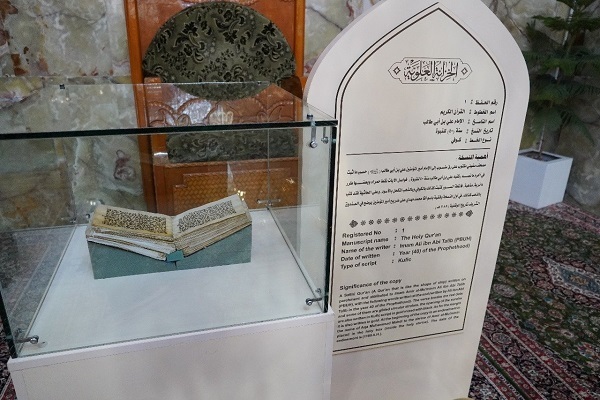Quran Manuscript Attributed to Imam Ali on Display at Najaf Shrine


The exhibition of Qurans and rare manuscripts has been mounted as part of the programs of the Ghadir Week.
Learning about the evolution of Arabic calligraphy and Quranic calligraphy during different Islamic periods is one of the objectives of the exhibition.
According to Ammar Mashallah, head of the treasury of the Astan (custodianship) of the holy shrine, the expo displays more than 50 rare and important Qurans from the 1st to the 14th century AH, highlighting the significance of Arabic calligraphy and its evolution over that period.
The Qurans exhibited here showcase the most important Islamic scripts used by prominent Quranic calligraphers of these eras, including Yaqut al-Hamawi and Suhrawardi, he noted.
The exhibition also features a collection of significant Qurans written by female calligraphers, Mashallah stated.
He said the copies of the Quran are considered rare and important in the world because of their antiquity and historical influence on the heritage of the Arab and Islamic world.
Ahmed al-Najafi, a researcher at the Treasury of the Astan, said the exhibition has been accompanied by a display a photos depicting the evolution of Quranic calligraphy.
He noted that a Quran manuscript attributed to Imam Ali (AS) is among the data-x-items on display, and it is said to have been written in the 40th year after Bi’tha.
Read More:
The holding of this exhibition reflects the Astan’s interest in preserving the Islamic and Quranic heritage, he went on to say.
The International Ghadir Week programs, which will culminate on the weekend, celebrate Eid al-Ghadir.
The event of Ghadir, or Eid al-Ghadir is celebrated by Shia Muslims around the world every year.
It is among important feasts and happy holidays of Shia Muslims held on the 18th day of Dhul Hijjah in the lunar Hijri calendar, which falls on Saturday, June 14, this year.
It was the day when according to reports, the Holy Prophet (PBUH) appointed Ali ibn Abi Talib (AS) as his caliph and the Imam after himself following an order from God.
4287790



